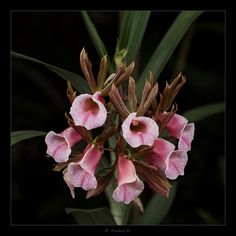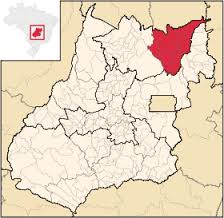Chapada dos Veadeiros
Alto Paraíso e a mística Galeandra
Um cidade no meio da savana brasileira, fundada por pessoas que queriam viver em paz e em harmonia com a vida, com a Mãe Terra e o cosmos, uma cidade multicultural cheia de línguas, pontos de vidas, crenças e religiões, lugar de vegetarianos, yogues, bruxos, extraterrestre. Lar do yogue Sri Prem Baba
religiões, lugar de vegetarianos, yogues, bruxos, extraterrestre. Lar do yogue Sri Prem Baba , de terreiros de umbanda, igrejas cristãs, covens de bruxos, terapeutas, cantores, hippies e muito mais que você possa imaginar, esta é a cidade de Alto Paraíso de Goiás.
, de terreiros de umbanda, igrejas cristãs, covens de bruxos, terapeutas, cantores, hippies e muito mais que você possa imaginar, esta é a cidade de Alto Paraíso de Goiás.
Neste meio místico é que surge a famosa orquídea Galeandra Chapadensis, menina tímida, ninfa que se esconde nas matas da Chapada dos Veadeiros, no Estado de Goiás.
Orquídea descoberta na Chapada dos Veadeiros, por isso o nome: Galeandra Chapadenses, é endêmica do local. O gênero Galeandra possui aproximadamente 40 espécies espalhadas por vários países da América do Sul e Ásia tropical. Podem ser terrestres ou epífitas. No Brasil preferem campos secos e arenosos além de matas ralas e com altitude superior a 900 metro, o que dá margem para falar da Galeandra Chapadenses, cujo habitat, a Chapada Dos Veadeiro apresenta clima seco durante o inverno e úmido durante o verão e possui a pedologia marcada por rochas areníticas, lugar preferido da Galeandra Chapadense, a também conhecida orquídea beija-flor.
Este espécie floresce no outono ou verão, apresenta folhas alongadas, apresentam pseudobulbos quando epífitas, seu crescimento é cespitoso, ou seja, lança brotos e caule de maneira aglomerada, possui porte pequeno (13 cm de cumprimento) e flores grandes. No inverno a espécie entra em dormência assim como várias espécies de Catasetuns.
Cultivo: A Galeandra pode ser cultivada do mesmo que é cultivado os Catasetuns, aliás ela é parente deles!!. Pode ser plantada em garrafa pet com furos e o básico: pedra embaixo e esfagno. Cuidar pra não umedecer demais o musgo por que pode sufocar as raízes, iluminação entre 50% a 75%, aplicar adubo orgânico de preferencia e lembrar que assim como os primos Catasetuns, a Galeandra também hiberna durante um tempo. Segundo o Luis, proprietário do Orquidário Santa Catarina de Itápolis, é muito difícil polinizar uma Galeandra, por isso as mudas que ele consegue é de brotinhos da própria planta matriz.
Compra: http://yassunakaorquideas.com.br/mudasdeorquideas_119_0_Galeandra-chapadensis
Algumas espécies de Galeandras:



Vídeo:
Fontes:
http://orquideas-bromelias.blogspot.com.br/2014/03/134-orquidea-galeandra-chapadensis.html
https://es.wikipedia.org/wiki/Galeandra
http://orquideasfloresperfeitas.blogspot.com.br/2012/04/tipos-de-crescimento-de-orquideas.html
http://www.bvorchids.com.br/ptbr/geral/plantas.php?id=S1691
English Version:
A town in the middle of the Brazilian savannah, founded by people who wanted to live in peace and harmony with life, with Mother Earth and the cosmos, a full multicultural city of languages, life points, beliefs and religions, place of vegetarians, yogis, wizards, extraterrestrial. Home of the yogi Sri Prem Baba, of terreiros of Umbanda, Christian churches, covens of witches, therapists, musicians, hippies and more that you can imagine, this is the city of Alto Paraíso de Goiás.
This mystical means is that there is the famous orchid Galeandra chapadensis, shy girl, nymph hiding in the woods of Chapada dos, state of Goiás.
Orchid discovered in the Chapada dos Veadeiros, hence the name: Galeandra Chapadenses, is endemic to the place. The Galeandra genus has about 40 species across several countries in South America and tropical Asia. Can be terrestrial or epiphytic. In Brazil prefer dry and sandy fields in addition to thin forests and altitude of 900 meters, which gives rise to talk of Galeandra Chapadenses, whose habitat, Chapada Dos Veadeiros features dry weather during the winter and humid during the summer and has the pedology marked by sandstone rocks, favorite place of Galeandra chapadense, the well-known orchid hummingbird.
This species blooms in the fall or summer, has elongated leaves, pseudobulbs when epiphytes, their growth is cespitose, ie spear buds and stem crowded way, has small (13 cm long) and large flowers. In winter the species goes into dormancy as well as several species of Catasetuns.
Cultivation: The Galeandra can be grown the same that is grown the Catasetuns , indeed it is a relative of them !! . It can be planted in plastic bottle with holes and basic : stone underneath and sphagnum . Careful not too wet moss that can suffocate the roots , lighting from 50 % to 75 % , apply organic fertilizer and preferably remember that just as Catasetuns cousins, the Galeandra also hibernates for a while. According to Luis , the owner of Orchid St. Catherine of Itápolis , it is very difficult to pollinate one Galeandra , so the seedlings he gets is of his own mother plant shoots.
As primitivas baunilhas da Kalunga e a Chapada dos Veadeiros (english version)
Olá amigos de todo mundo, mais uma vez sinto alegria em relatar minhas andanças pelo Brasil em busca de aventura, belezas naturais, cultura e se possível orquídeas.
Em julho de 2016 descobri tudo isso visitando a belíssima Chapada dos Veadeiros no estado de Goiás, coração do Brasil. A Chapada dos Veadeiros, pra quem não sabe, é um parque nacional e patrimônio mundial reconhecido pela UNESCO, é lar do bioma do cerrado e abriga uma infinidade de plantas e animais. O cerrado é um vegetação semelhante à savana africana, porém é mais rico em biodiversidade além de ser local de nascente de vários rios que vão formar importantes bacias hidrográficas.

No mês de julho, inverno no Brasil, há uma explosão de flores no cerrado, pude vê-las caminhando pelas trilhas do Parque Nacional e com olhos curiosos tentei observar se haveria alguma orquídea no meu caminho, infelizmente não encontrei nenhuma delas nas trilhas para as cachoeiras do parque nacional, porém já no outro dia iria me deparar com algumas surpresas daquele lugar mágico.
pude vê-las caminhando pelas trilhas do Parque Nacional e com olhos curiosos tentei observar se haveria alguma orquídea no meu caminho, infelizmente não encontrei nenhuma delas nas trilhas para as cachoeiras do parque nacional, porém já no outro dia iria me deparar com algumas surpresas daquele lugar mágico.
Seguindo a viagem visitei um antigo Quilombo Kalunga, local de esconderijo dos negros fugindo da escravidão no Brasil do século dezoito.

Um lugar simples, cheio de gente humilde vivendo num paraíso natural, podendo vislumbrar as belezas do céu enluarado sem interferências da poluição e do barulho da cidade grande. No mercado da vila ao me aproximar, vi que eram oferecidas aos visitantes vagens de baunilha colhidas no meio da vegetação. Vagens grandes, cheirosas que cresciam naturalmente no meio do cerrado. Fiquei maravilhado com a descoberta, neste mesmo dia fomos a uma cachoeira com águas cor de esmeraldas, a cachoeira mais linda que já vi na vida, chamava-se Santa Bárbara.

No outro dia, já de tarde, após visitar inúmeras cachoeiras, perto da cidade de Alto Paraíso e Cavalcante, fomos relaxar nas piscinas de águas termais no interior da floresta e lá após alguns dias caçando orquídeas, pude observar as baunilhas nativas que cresciam longas e fortes entre as árvores.

O tamanho impressionava, a força para se erguer em busca de luz também. O caule cilíndrico, a raiz terrestre e o fato desta ser uma das mais antigas famílias de orquídeas do mundo na verdade não surpreende, posto que a região da Chapada dos Veadeiros também é uma das regiões mais antigas do mundo.
O surgimento da Vanilla da família orchidaceae, está situada nos primórdios do Cretáceo, há 130 milhões de anos atrás, foi uma das primeiras orquídeas a desenvolver flores, mas o que chama mais atenção nelas são as vagens com sementes escuras e saborosas.
Esta família está distribuída em várias regiões do mundo, na Chapada dos Veadeiros provavelmente foi a espécie Vanilla chamissonis, que encontrei no meio da mata. A plantas podem atingir 30 metros de comprimento e a maior dificuldade em planta-las para comercialização é a necessidade de polinização manual.
Já em seu habitat, os insetos polinizadores fazem este trabalho, que mais tarde será ganha pão dos kalungas.
Fonte:
http://www.delfinadearaujo.com/generos/vanilla/vanilabr.htm
ENGLISH VERSION
Hello friends from all over the world once again feel joy in my wanderings report by Brazil in search of adventure, natural beauty, culture and possible orquídeas.mapa chapada
In July 2016 I discovered all this by visiting the beautiful Chapada dos Veadeiros in Goiás state, the heart of Brazil. The Chapada dos, for those unaware, is a national and world heritage recognized by UNESCO park, is the cerrado of home and houses a multitude of plants and animals. The Cerrado is a vegetation similar to the African savanna, but is richer in biodiversity as well as being local source of several rivers that will form important watersheds.
In July, winter in Brazil, there is an explosion of flowers in the cerrado, 009 could see them walking the trails of the National Park and with curious eyes tried to see if there was any orchid in my way, unfortunately not found any of them on the trails the waterfalls of the national park, but already the other day would come across some surprises me with that magical place.
Following the trip I visited an old Quilombo Kalunga, blacks hiding place fleeing slavery in the eighteenth century Brazil.
A simple place, full of humble people living in a natural paradise, and can glimpse the beauty of moonlit sky without interference pollution and big city noise. In the village market as I approached, I saw that were offered to visitors vanilla beans harvested in the middle of vegetation. large pods, smelling that grew naturally in the middle of the savannah. I marveled at the discovery, in the same day we went to a waterfall with color emerald waters, the most beautiful waterfall ever seen, was called Santa Barbara.
The other day, as of late, after visiting numerous waterfalls near the town of Alto Paraíso and Cavalcante, we relax in the thermal pools in the forest and there after a few days hunting orchids, I could observe the native vanilla that grew long, strong among the trees.
Vanilla
The size impressive, the strength to stand up for light as well. The cylindrical stem, the earth roots and the fact that this is one of the oldest families in the world orchids actually not surprising, since the region of Chapada dos is also one of the oldest regions of the world.
The emergence of the Vanilla orchidaceae family, is situated in the beginning of the Cretaceous, 130 million years ago, it was one of the first orchids to develop flowers, but what draws more attention to them are the pods with dark and tasty seeds.
This family is distributed in various regions of the world, in the Chapada dos Veadeiros it was probably the Vanilla chamissonis kind, which I found in the woods. The plants can reach 30 meters long and more difficult to plant them for marketing is the need for manual pollination.
Now in its habitat, the pollinating insects do this work, which will later be breadwinners of Kalunga.
Visit Chapada dos Veadeiros
Access: http://www.chapadadosveadeiros.com/
Source:
